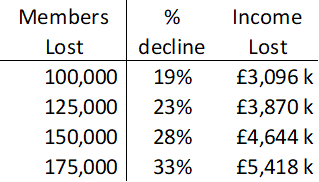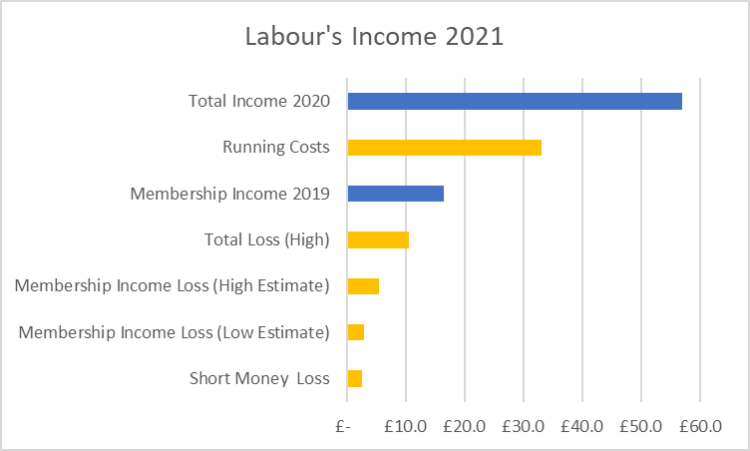The Labour Party has launched a redundancy programme which may or may not be linked with plans to consolidate English based staff into three English hubs. It’s doing this because it’s short of money reportedly down to one month’s reserves. In Dec 2019, it had reserves of £13.4 million. How did it move from the richest party in the country to this?
The short answer is that it’s lost a lot of members and lost a lot of “Short” money.
Opinion be divided as to how many members it’s lost, but, the 2020 Annual Report (P59) says,
As at 31 December 2020 the total individual membership of the Party was 523,332 (2019:532,046).
The Labour Party Annual Report 2021
As at 31 December 2019 the total individual membership of the Party was 532,046 (2018: 518,659).
The Labour Party Annual Report 2020?
This would seem to contradict Ann Black’s comments in her report of the NEC meeting at which they got their instructions, where she says,
In fact the paid-up total was [today] still over 430,000. This is above the figure in November 2019 which had steadily declined since peak Corbyn, and more than double the level from 2002 to 2015 when membership stayed below 200,000 throughout.
Ann Black on the record
There may be a problem[1] in how the LP counts membership and reports it to the Electoral Commission and the NEC, but if the Annual Report and EC return was accurate then Ann’s Nov 2019 figure, seems, low, as it suggest that Labour had lost, 70k members during the year and put on 102k in a month, and a month in which the party was not accepting/processing membership applications.
I have made a table showing the impact of the loss of members on membership fee income. If Ann’s numbers are correct, we have lost of the order of 20% of our members, if my informal monte-carlo estimates are right, then I think it closer to 33%, leading to annual losses[2] of between £3m & £5½m income[3].

Short money is paid to opposition parties depending upon the votes and seats won. Both went down in 2019 and so Labour’s Short Money dropped from £9m to £6½m, a loss of £2.4m.
The Trade Union letter to David Evans, suggests that the Party has not managed its staffing budget well, although the humanity in the (unsubsidised) furloughing of staff whose contracts had expired as the pandemic hit is to be admired, the continuing tendency, started in 2010 to duplicate senior roles in LOTO and Southside is not.

The reserves were £16m, the loss of income seems to be between £5½m & £8m p.a. The 2019 running costs were £33m.
This is a problem measured in millions of pounds yet requires an eye for detail and obfuscation.
The obvious answer is to reverse the loss of members which is not so easy, but my next blog might be on that.
[1] It may include members in arrears and in a pre-lapse stage
[2] Income stops when the DD is cancelled. Labour waits 12 months to delete people from the membership list.
[3] I use the annual report to estimate the number of people paying reduced rates, which may underestimate the number since I divide membership income by the number of members. Average payment is 60% is the full rate. The 12 month waiting period on zero payment before being struck off the membership list makes this technique of questionable accuracy, it would over estimate the income loss.
[α] I have uploaded the spreadsheet I used to make these numbers.
[β] The LP’s annual report 2020 is on their site here.
Pingback:Labour’s lost millions? – davelevy.info
I have uploaded the spreadsheet I used.
Pingback:Labour’s new disciplinary processes – davelevy.info
Pingback:SCRUM |
It seems I made a mistake, today I removed and replaced the comment, “As at 31 December 2019 the total individual membership of the Party was 532,046 (2018: 518,659).”, which must have been from the 2020 Report.